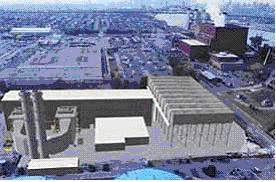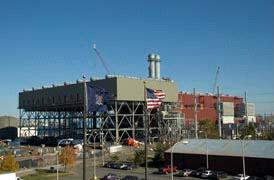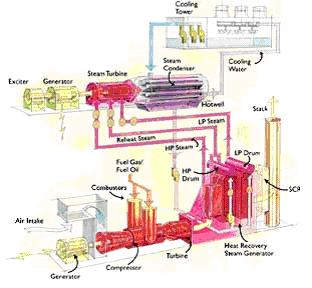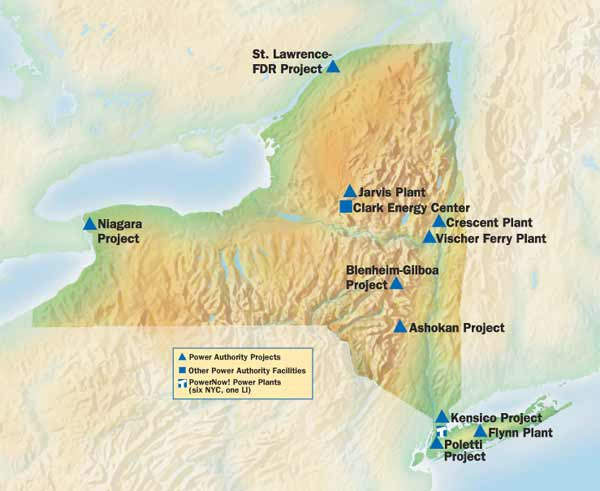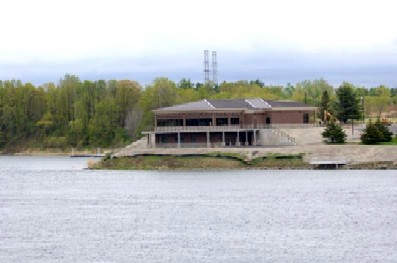Astoria Energy LLC was authorised by the New York Power Authority (NYPA) in April 2008 to build a second natural gas-fuelled plant in Queens to supply its governmental customers.
The new 550MW plant supplies power under a 20-year contract with NYPA.
The new plant known as Astoria II is fully licensed. It entered into commercial operation in July 2011 and is a twin of the older plant Astoria I.
Astoria’s first plant, dubbed one of America’s cleanest and most efficient began commercial operation in Astoria, Queens, New York in December 2005 after successful equipment tests in September of the same year. The $650m power plant has two combustion turbines and a steam turbine generating 500MW.
The plant is located on a seven acre plot that is part of a 47-acre site owned by the Power Authority in Astoria, Queens. The facility is adjacent to NYPA’s now defunct Poletti Power Project, an 875MW generating facility.
The Power Authority built the first plant to meet the electricity requirements of its large government customers in New York City. These include schools, hospitals, municipal buildings, and the subways and commuter trains.
Combined-cycle plant uses air cooled condenser
The combined-cycle operation will generate 50% more electricity from the same fuel than a conventional single-cycle power system. Two combustion turbine-generators operate with two heat-recovery steam generators and a steam turbine-generator. In the first cycle, combustion gases from the fuel power two turbine-generators to produce electricity. Hot exhaust normally lost during this process is captured and routed through the two heat-recovery steam generators. These units boil water to create steam, which spins an additional turbine-generator and produces more electricity.
Finally, the steam is discharged into a condenser, which returns the steam to its liquid state for recycling. The air-cooled condenser avoids the need for taking water from the East River, preventing disruption of the aquatic environment.
Around 650 workers, representing nearly 15 local labour unions, worked at the peak of the plant’s construction. Workers were required to use low sulphur fuel and particulate-control technologies in their off-road construction equipment and vehicles to limit emissions and protect air quality.
Largest non-federal public power utility
The New York Power Authority is the largest non-federal public power utility in the country.
Since 1905, the site has been used for electricity generation, fuel storage and related industrial purposes. By building the new combined-cycle plant next to its Poletti project, the Power Authority was able to use the existing infrastructure network. That includes a natural gas supply, electric transmission and fuel storage facilities. The Power Authority purchased the Poletti project, then known as Astoria 6, from the Consolidated Edison Co. in 1974 when the plant was under construction.
In 2002, the Coalition Helping Organize a Kleaner Environment (CHOKE) and other environmental groups forced the state to build the new power plant and close the existing Poletti plant. NYPA was forced to reduce emissions from the Poletti project by increasing the use of natural gas rather than fuel oil. NYPA is providing an additional $50m for local energy efficiency and clean energy projects.
The Poletti project that had been scheduled to be terminated between 2008 and 2010, was closed in January 2010.
A report by the US Environmental Protection Agency showed that an unacceptable amount of toxic chemicals were being released into the Queens environment, with the 25-year-old Poletti plant being the biggest offender.
The closure will significantly reduce emissions of fine particulate matter (PM2.5) and other pollutants. The NYPA next hopes to reduce PM2.5 emissions in New York, including both power plants and diesel vehicles.
Initial complaints that the Astoria turbines were spewing dark brown smoke were answered by the Power Authority saying that this was a normal, one-time occurrence when turbines are first powered up.
Programme and construction management
DMJM Harris had provided complete programme and construction management services for the largest new generation project in New York City in years. NYPA’s on-site staff managed all contractors. Services included planning and scoping, design management, estimating and scheduling, detailed design, bid analysis, construction oversight, budget/schedule control as well as final inspections.
Slattery had constructed the power generators. The steel-framed, 97,000ft2, two-storey structure housing the generators features an acoustical metal siding exterior and includes 25,000 cubic yards of structural concrete. Mechanical work consists of installing all major and balance of plant equipment, 110,000 linear feet of process piping with 500 monitoring instruments, a 1,000,000 gallon water tank and a 32-cell air-cooled condenser.
New York State Independent System Operator (NYISO) runs the state’s transmission system and wholesale power markets.

